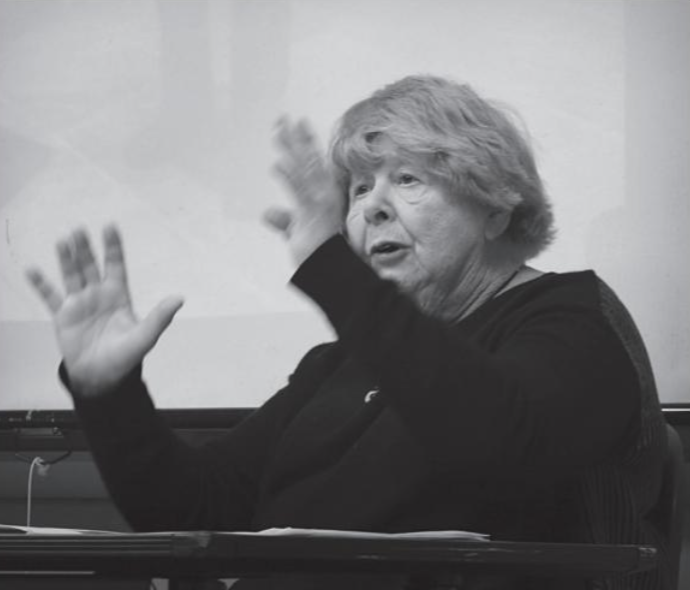By Nora Ibrahim, Staff Writer
In celebration to this literary form of art, poetry, USM hosted an event to celebrate with an American poetry scholar and critic, Marjorie Perloff. Perloff has taught English at the University of South Carolina, University of Maryland and Stanford University.
Perloff is a modernist critic that explores avant-garde poetry. Throughout her lecture, she scrutinizes the feel of lines of different poems that are written by recognizable poets from the 19th century to today. Some topics she covered during the presentation are repeat vs. replicate, “Infra-thin,” and the Six Faces of Haphazard.

Each topic contributed to defining poetry in the digital age in such way that illuminated aspects of originality and the understanding of difference. For instance, “Infra-thin,” as Perloff defined it, “are the smallest differences; those that you don’t notice.” She gave an example by demonstrating the difference in changing one letter within a poem by sharing the ending of a poem titled, When Orbital Proximity Feels Creepy, by Peter Gizzi. The lines are as follows: “The wobble of light on wood-grain late/ in the day./In the loneliness of orange./In the loveliness of orange.”
Perloff also had a focus on the importance of format and structure within a poem. She stated, “Shear scale and shear size is very important; whether you see something in miniature size, you blow it up; here again, of course, the computer comes in and you can blow anything up, and it’s going to look different. It’s going to have a different affect, and a different feel.” An example she gave in regard to this was the book Day by Kenneth Goldsmith. Goldsmith took one day of stories of the New York Times and represented them as a book. Perloff said, “the main thing he did is remove all the headlines, all the bolding, everything else, everything’s the same, no columns.”
She continued by providing further examples to her argument such as movie advertisements and the structural format of the words where the most important information are in bold or in larger size. If the format was rather unified without any significant structure in appearance, the reader will have a difficult time distinguishing key details. Perloff also commented on the impact of repetition in this day and age of how lyrical poetry or even movies, have lost the “fun” factor.
Nancy Gish, a Professor Emerita at the University of Southern Maine and a published author; specializes in modern British poetry, added in an interview: “As Perloff showed, with technology one can do many experimental things on the page. A fundamental part of that is making poetry spatial as well as linear: one can change lines and whitespace, add images, mix poetry with music and art and films, and incorporate many kinds of media, as in the mix of text and music and art forms.”
Furthermore, during the questions and answers session, a question was asked in regards to the originality of work compared to the repetitions and replicas that are produced today based off of the many forms of art. Perloff said that in the nineteenth century, painting was inferior to literature; after movements like the impressionist, many forms of painting styles were present and slowly this popular form of art drifted within the rise of art forms. As she added, “today painting is not even the normal visual art; you get instillations, you get photographs, you get all kinds of forms of art.”
Shelton Waldrep, a Professor of English at USM and a published author, shared his insight on what he took away from the lecture, “As she said in her talk, words are not poetry unless they are being used to get across something more than just information. They must be doing something more than merely communicating a concept or an idea; they must be charged with meaning in the utmost possible way.”
To conclude, the questions arises of why now? Why has this certain topic been selected to be addressed now? Gish summarized the purpose of the selection of this topic based on her understanding and analysis of the lecture by stating:
“She defined her concern in the first part of the talk: she feels poetry–which for her is central to human life–is seldom now, in the US–new…because of the computer, many new ways of composing and of joining multiple arts are possible. So she is pointing to possibilities for contemporary avant-garde experimentation. So in a general sense the timing is a response to what media can now be used to create.”
Poetry is an essential part of the human experience, and similar to the humanistic adaptation to change. Poetry was able to adapt to the new world of technology. Despite the fast changing technological system, more people are connected with it.

